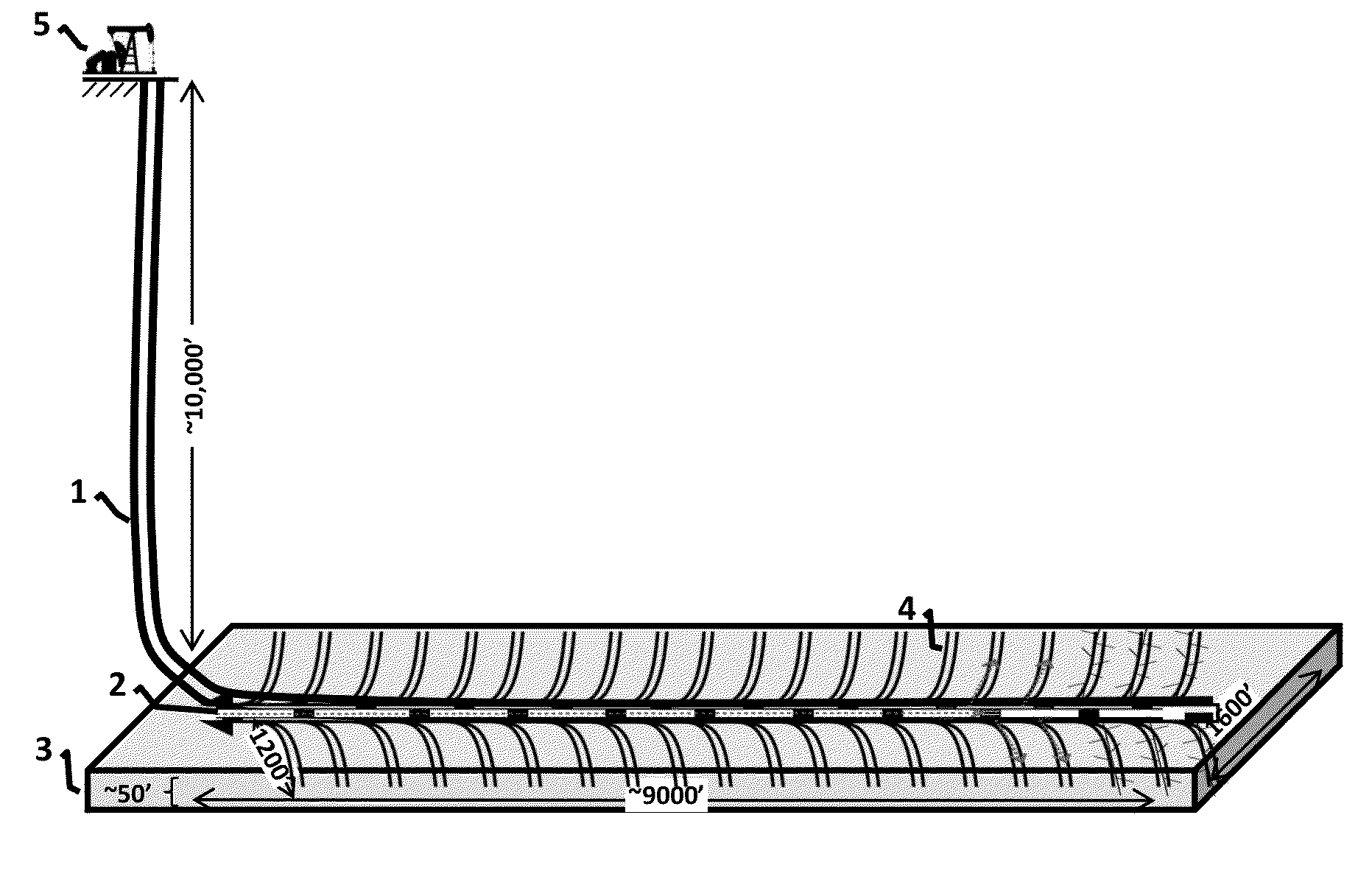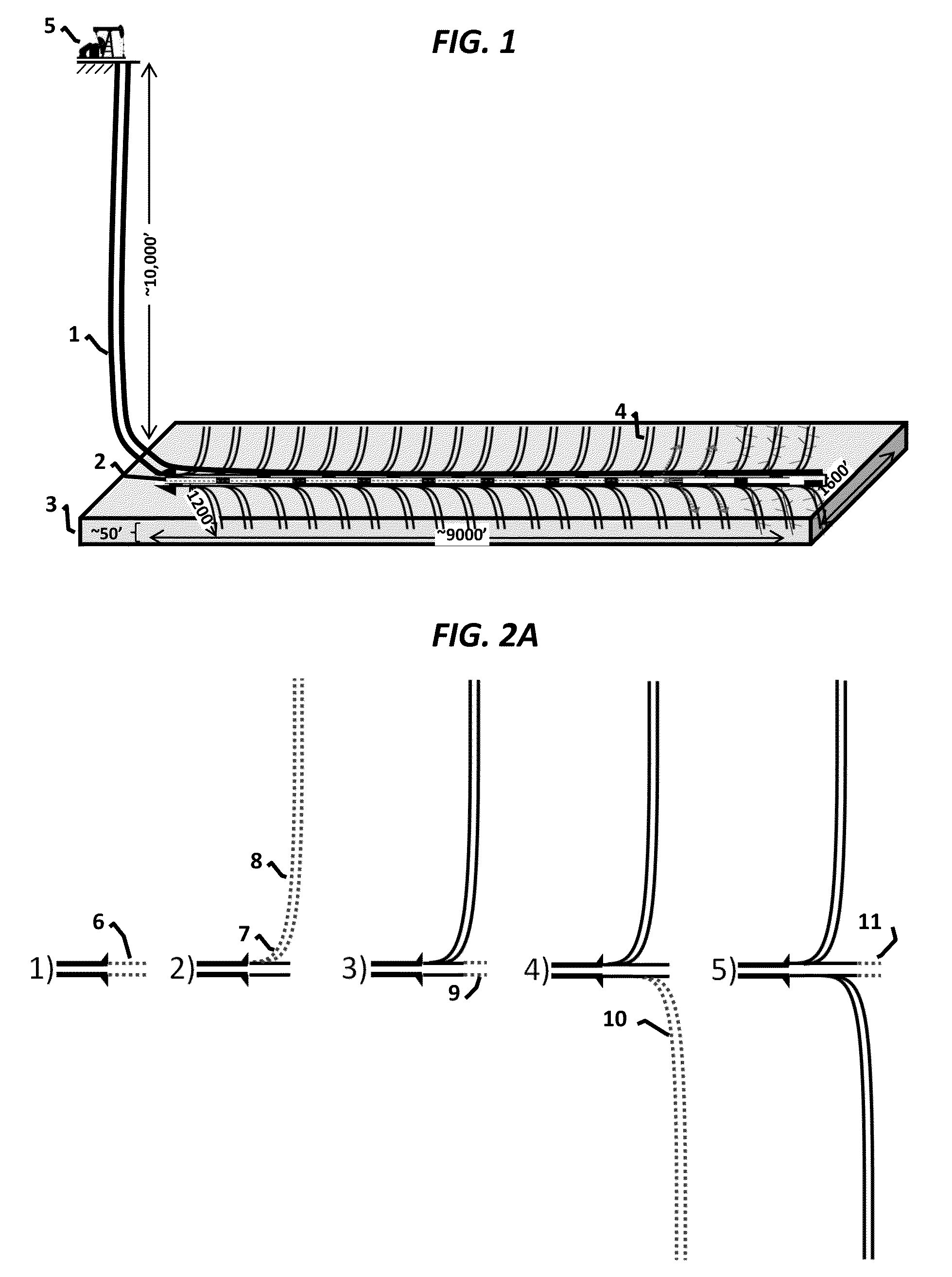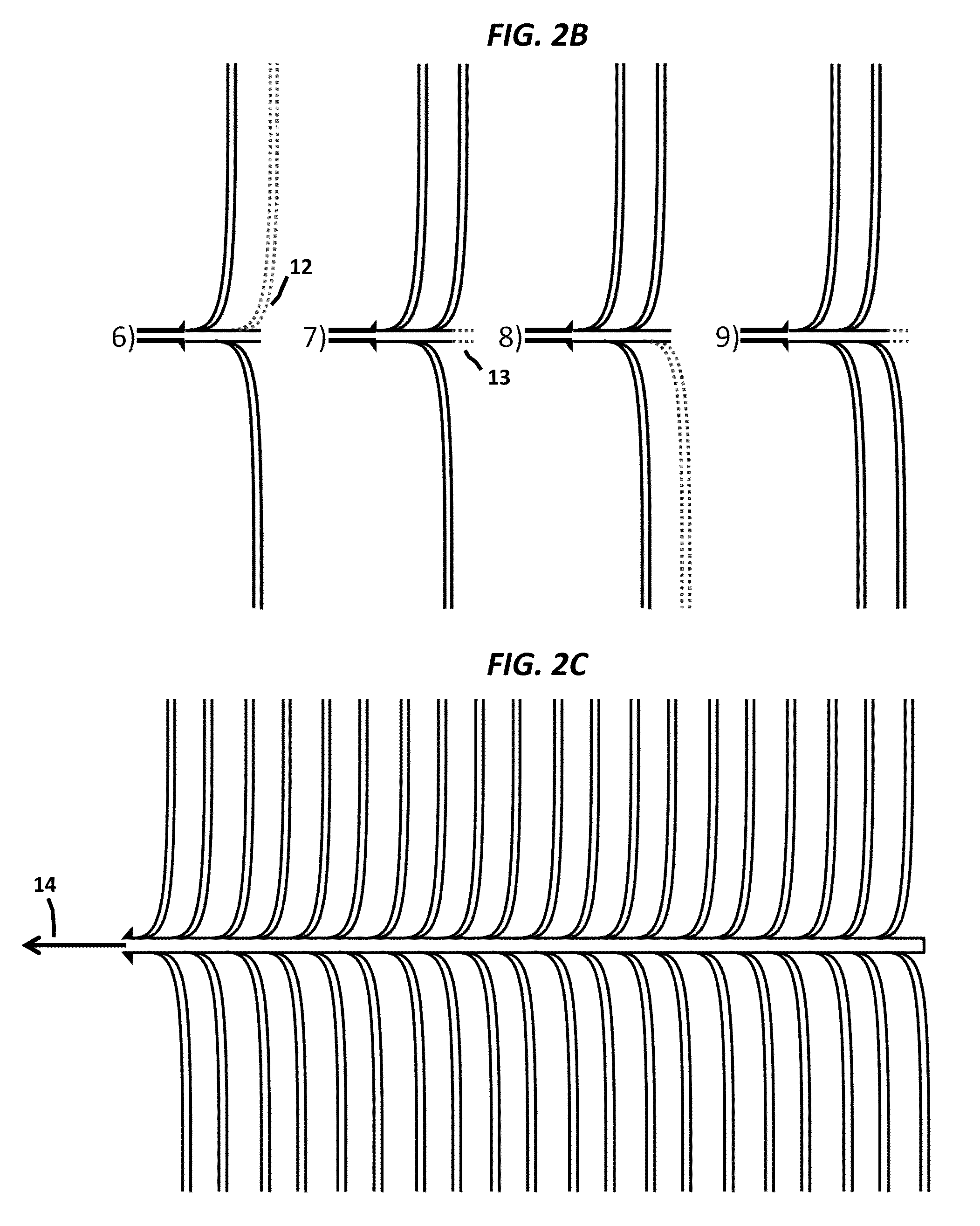Method for developing oil or natural gas shale or tight rock formations in two step process
- Summary
- Abstract
- Description
- Claims
- Application Information
AI Technical Summary
Benefits of technology
Problems solved by technology
Method used
Image
Examples
Embodiment Construction
[0015]Referring to FIG. 1 there is shown a well comprising a cased wellbore 1 connecting the surface facilities 5 to the lowest casing shoe 2, below which extends the main horizontal wellbore. The side laterals 4 extend in both directions off the main wellbore. Both the main horizontal wellbore and side laterals are drilled largely within the targeted shale or tight rock zone 3. This figure shows the well during step 2 when the frac string has been run and the fracturing treatments are underway. It depicts the bottom six side laterals as already being fractured, with the next four laterals underway.
[0016]FIG. 2 shows the construction of the step 1 multilateral well. As shown in FIG. 2A, it begins with drilling a short section 6 out from the casing shoe. Depending on where the casing shoe is landed, this short open hole section may be just a few hundred feet long, or may be longer if the casing shoe is still a further distance from the target zone. The drill assembly is then configur...
PUM
 Login to View More
Login to View More Abstract
Description
Claims
Application Information
 Login to View More
Login to View More - R&D
- Intellectual Property
- Life Sciences
- Materials
- Tech Scout
- Unparalleled Data Quality
- Higher Quality Content
- 60% Fewer Hallucinations
Browse by: Latest US Patents, China's latest patents, Technical Efficacy Thesaurus, Application Domain, Technology Topic, Popular Technical Reports.
© 2025 PatSnap. All rights reserved.Legal|Privacy policy|Modern Slavery Act Transparency Statement|Sitemap|About US| Contact US: help@patsnap.com



